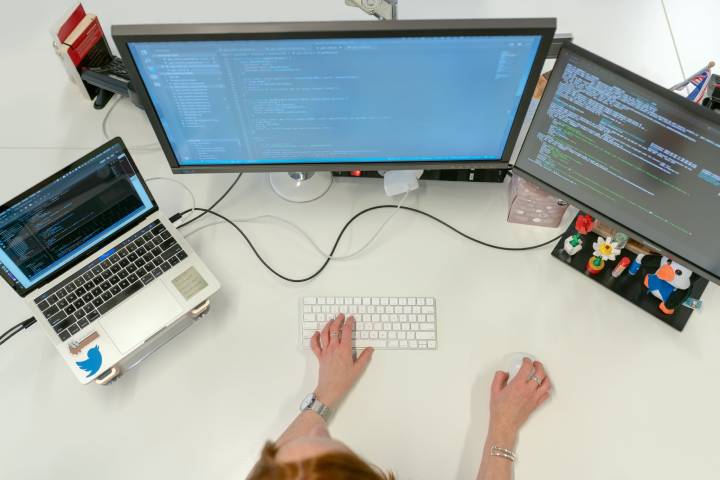All it takes is one system vulnerability for cybercriminals to infiltrate your network and wreak havoc to your business.
That is why it’s crucial to test if your deployed security solutions and assess your defensive parameters for exploitable gaps.
The good news is, you can do all this through a Break and Attack Simulation (BAS).
BAS solutions simulate real threat actions to help determine whether your existing security controls can catch them and provide remediation recommendations.
In this guide, we’ll cover the nuts and bolts of BAS, why it’s critical to adopt BAS platforms, and how it can improve cybersecurity in business.
1. Why do security gaps exist
Many software, including applications, operating systems, and even security solutions, can have bugs or other vulnerabilities attackers can easily exploit.
Plus, most software apps get updates and changes regularly that are often forgotten or ignored, increasing the chances of attacks slipping into your network.
Another cybersecurity risk is poor or improper implementation, such as companies and their IT teams rushing through security tools adoption.
As a result, teams and companies can easily overlook or miss critical configurations and steps, leading to holes in the security infrastructure.
Even the most robust cybersecurity solution can be rendered useless if it’s badly deployed.
For instance, you might establish a set of stringent policies to prevent hackers from breaching your network externally. However, malware can still get inside your network if your endpoint protection is lacking.
2. Understanding breach and attack simulation
Breach and attack simulation is a platform or set of technologies that let you consistently and continually simulate complete attack cycles.
This includes running threat actions that mimic threat actions such as data exfiltration, insider threats, and lateral movements against your infrastructure using virtual machines, software agents, and other methods.
Essentially, Breach and Attack Simulation is a platform that simulates attacks on your systems to test your defenses. These solutions use complex attack scenarios to bypass your security control systems and reach a certain goal.
If the goal is reached, such as traffic going through your firewall, this means the BAS helped uncover a vulnerability in that control, prompting remediation.
BAS provides a programmatic method to validate your security controls and even allows you to bypass some of the limitations of the common testing and attack approaches.
Instead of relying on small teams or individuals to perform cyber threat analyses annually, BAS platforms can execute thousands of proven cyber-attack techniques (at scale) automatically and continuously.
Additionally, unlike most traditional cyber-attack techniques, BAS can be safe for production environments — running simulations without putting sensitive data at risk.
This allows even the highly sensitive production networks to validate security controls continuously and stay ahead of real threats.
3. How breach and attack simulation improves your cybersecurity
Implementing breach and attack simulations can help strengthen your cybersecurity infrastructure.
Any of its real benefits include the following.
a. Validate your existing security controls
BAS can test your company’s infrastructure and security controls. It helps you evaluate your defense measures by simulating attacks that assess their strengths and identify and report weaknesses consistently and continuously.
BAS platforms can recommend improvements to fortify your cybersecurity, such as updating your existing controls’ configuration and other related technologies when applicable.
Through BAS, you and your security team can determine whether your company’s systems and infrastructure are vulnerable to the uncovered types of cyber-attacks. Here, in change, enables you to evaluate your existing controls’ effectiveness and determine potential exposure.
b. Bring out weaknesses in your security posture.
The many security layers, various products to secure and track, and numerous configurations often make it challenging to get your security posture to 100%.
Plus, there are too many unknown variables involved in cyberattack simulations for a team to cover everything every single time.
However, breach and attack simulations can run automatically, allowing you to cover most, if not all, known and unknown variables.
This helps prepare, equip, and protect you better since the BAS tools can comprehensively detect, report, and recommend fixes to holes in your security infrastructure.
c. Train and equip your team against threats
Breach and attack simulations can serve as good training for your internal security team. It helps prepare them, and in turn, your company to identify security gaps and respond to threats effectively.
Typically, during traditional attack simulations, teams relied on verbal tabletop exercises where members work through hypothetical scenarios to determine how they’d respond.
However, BAS allows teams to run simulated attacks effectively, mirroring cyber attacker tactics. This gives your staff more realistic experiences to guide their training, equipping them better to handle real-life attacks.
d. Facilitate comprehensive threat assessment
Cyber attackers’ techniques, tools, and strategies are constantly evolving. This means you’ll need to implement the right approaches and fortify your technology systems to keep up and stay secure.
By executing breach and attack simulations, your security team can continuously and proactively run cyber attacks that simulate the latest techniques hackers use.
This leads your team to thoroughly and objectively assess your security posture, determine threats, and establish strategic plans to address your identified vulnerabilities and gaps.
e. Assess whether you’re investing in the right solutions
BAS technologies can give you a comprehensive view and specific insights into your security infrastructure and whether your cybersecurity solutions are working.
This lets you know if investing in your cybersecurity solutions is paying off. BAS platforms also help you identify security holes, allowing you to determine poor-performing or ineffective security solutions and, in turn, bad investments.
You’ll also better understand your company’s security posture, helping you prioritize future investments in solutions that best address your cybersecurity needs.
f. Ensure due diligence
Your company must exercise due diligence before, during, and after undergoing mergers and acquisitions.
After all, both companies should understand the potential cybersecurity threats in play.
Breach and attack simulations offer a solution by allowing cybersecurity teams to evaluate a new company’s security posture exhaustively. This includes large enterprises with massive infrastructure and thousands of systems.
Through BAS solutions, cybersecurity teams, business leaders, and other stakeholders can develop strategic plans, make informed decisions, and effectively mitigate risks across the merger process.
4. Start adopting breach and attack simulations into your cybersecurity systems.
In a nutshell, BAS solutions play a crucial role in protecting your critical company assets. These simulate the most likely attack techniques throughout all vectors and provide you with priority remediation guidance.
Continuous and automated breach and attack simulations can give your systems and infrastructure constant protection. These also allow your internal security teams to take a more aggressive approach to mitigate risks and maintain security across all aspects of your cybersecurity environment.
Find a BAS platform that addresses your cybersecurity protection needs and works best for your business.
Tech Trends
Related posts
Leave a Reply Cancel reply
Hot Topics
Categories
- Ads (5)
- Animes (25)
- Artificial Intelligence (AI) (35)
- Augmented Reality (AR) (10)
- Automotive (9)
- Bitcoin (16)
- Blockchain (24)
- Business (244)
- Business Intelligence (3)
- Cloud Computing (23)
- Computer (128)
- Concrete Technology (1)
- Cryptocurrency (10)
- Cybersecurity (42)
- Data Science (9)
- Database (4)
- DevOps (6)
- Digital Marketing (76)
- Digital Workplace (14)
- Ecommerce (1)
- Education (28)
- Electric Vehicle (EV) (1)
- Electronics & Hardware (17)
- Entertainment (42)
- Fabrication (3)
- FAQ's (1)
- Finance & Marketing (47)
- Gadgets (35)
- Games (8)
- Gear (29)
- HTTPS (1)
- Industry (46)
- Information Technology (90)
- Internet (413)
- Internet of Things (IoT) (41)
- Job (25)
- Machine Learning (6)
- Marketing (92)
- Mobile Apps (21)
- Movies (11)
- Natural Language Processing (6)
- News & Trends (109)
- Programming (4)
- Science & Technology (235)
- Security (81)
- SEO (56)
- Services (36)
- Social Media (73)
- Software (99)
- Sports (1)
- Technology (306)
- Telecom (6)
- TikTok (5)
- Tours & Travels (9)
- Uncategorized (11)
- Virtual Reality (VR) (7)
- VoIP (4)
- Web Technology (42)
- Workforce (17)
- Workspace (6)



Stay connected